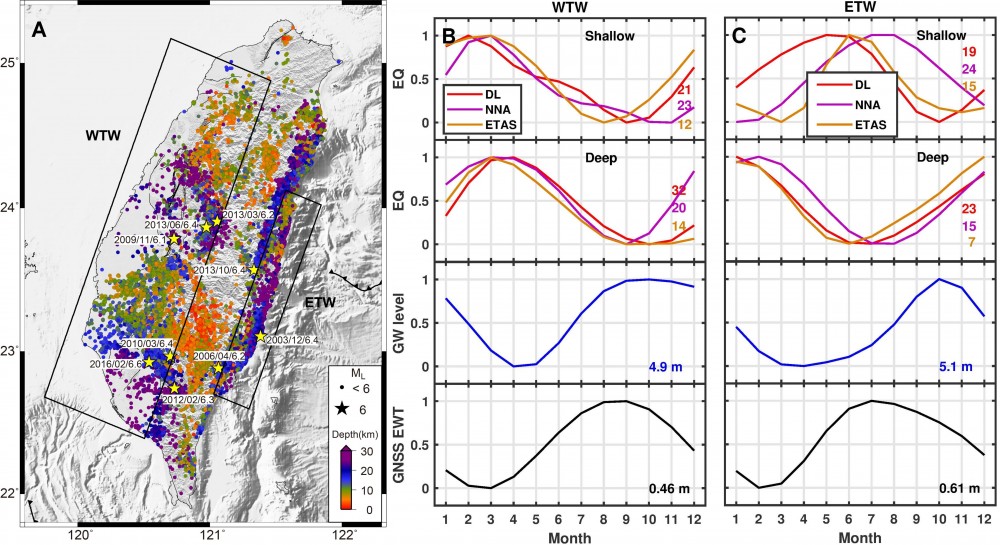Synchronized and asynchronous modulation of seismicity by hydrological loading: A case study in Taiwan
Delineation of physical factors that contribute to earthquake triggering is a challenging issue in seismology. We analyze hydrological modulation of seismicity in Taiwan using groundwater level data and GNSS time series. In western Taiwan, the seismicity rate reaches peak levels in February-April and drops to its lowest values in July-September, exhibiting a direct correlation with annual water unloading. The elastic hydrological load cycle may be the primary driving mechanism for the observed synchronized modulation of earthquakes, as also evidenced by deep earthquakes in eastern Taiwan. However, shallow earthquakes in eastern Taiwan (<18 km) are anti-correlated with water unloading, which is not well explained by either hydrological loading, fluid transport or pore pressure changes, and suggests other time-dependent processes. The moderate correlation between stacked monthly trends of large historic earthquakes and present-day seismicity implies a modestly higher seismic hazard during the time of low annual hydrological loading.
Full Article: https://advances.sciencemag.org/content/7/16/eabf7282.full

Figure 1. Seismicity and annual stacks of the shallow and deep seismicity rate in 2002-2018 (A) Seismicity with ML≥2.5 and depth≤30 km and large earthquakes with ML≥ 6. Black text shows the year, month, and magnitude of ML≥ 6 events. Boxes show the selected regions for analyzing earthquake seasonality in western (WTW) and eastern (ETW) Taiwan. (B) Data in WTW and (C) ETW. The depth thresholds for the separation of shallow and deep earthquakes are 11 km for WTW and 18 km for ETW, respectively. Number indicates the amplitude for normalization. Blue and black lines show the monthly average of annual groundwater level and GNSS-inferred effective water thickness (GNSS-EWT).